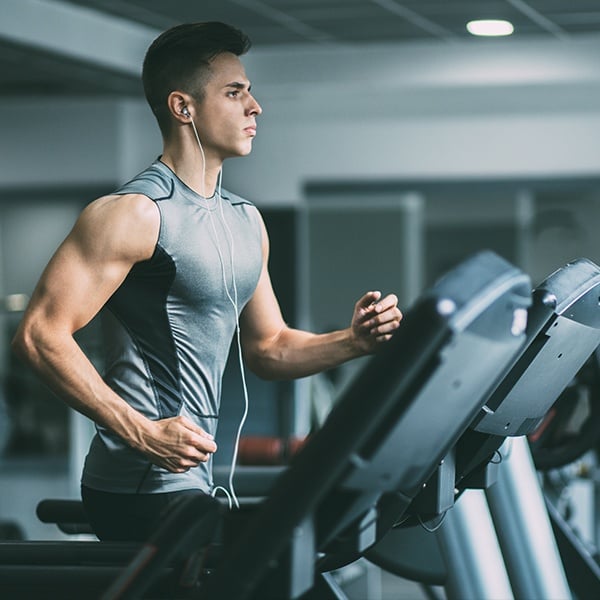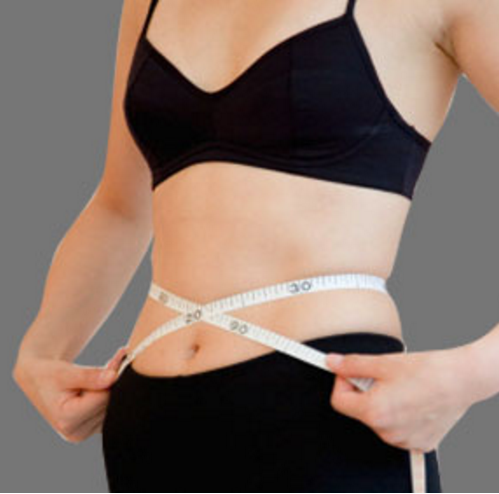Losing fat and losing body weight are two different things. Learn what to keep and what to say goodbye to.
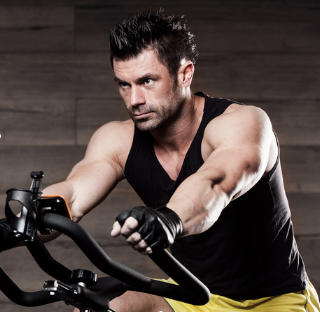 Took a few months off going to the gym? Maybe longer? Sometimes just getting to the gym is half the battle. But when you do get there, it can be hard to know what sort of training will help you reach your goals. In order to not get overwhelmed, first start thinking about what those goals are. Do you want to lose body fat, but retain your general size? Lose weight and decrease your overall size? Lose weight, decrease your size, but also get stronger? Think there’s not much difference? Think again.
Took a few months off going to the gym? Maybe longer? Sometimes just getting to the gym is half the battle. But when you do get there, it can be hard to know what sort of training will help you reach your goals. In order to not get overwhelmed, first start thinking about what those goals are. Do you want to lose body fat, but retain your general size? Lose weight and decrease your overall size? Lose weight, decrease your size, but also get stronger? Think there’s not much difference? Think again.
BODY FAT LOSS
If you look in the mirror and don’t like the spare tire that seemingly came out of nowhere, you’re probably looking at losing mostly body fat. Body fat, or adipose tissue, is separated into two types: visceral and subcutaneous fat. Visceral fat surrounds and protects your organs while subcutaneous lays just under the skin. Subcutaneous fat is generally what you see when looking at that spare tire. While you need a modest amount of both kinds, it’s the subcutaneous fat that is the focus when your goal is to lose excess, non-essential body fat.WEIGHT LOSS
Weight loss, while including the loss of body fat, also includes loss of muscle tissue. For someone who’d like to slim down in size and body fat, you’re looking at weight loss. Weight loss includes losing both body fat as well as lean muscle mass, bone minerals, and connective tissue. This can be tough though as we typically want to keep lean muscle mass as we lose excess body fat. It all comes down to the right training and diet.
GET STARTED
First things first! Record your weight in pounds, your measurements, and your body fat percentage. How do you do that? Make a plan that is smart and will challenge you. If it doesn’t challenge you, it won’t change you!1. Set a goal
- Do you want to lose body fat but keep your general size?
- Do you want to lose weight to decrease your overall size?
- Do you want to lose weight, decrease size, and get stronger?
2. Determine the method to use to measure results.
Weight in pounds
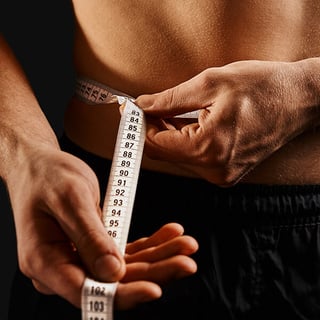
Pick the same day every week to weigh-in on a scale. Best time to weigh yourself is first thing in the morning when you wake up. And ditch the clothes before you get on the scale. Record each weekly weigh in.
Body fat percentage
To give you an idea where you’re at with your body fat percentage, athletic men typically fall between 6-13%, fitness level is 14-17%, normal is 18-25%, and obese is 26% or higher. There are several ways to take your body fat percentage. But since losing body fat percentage doesn’t happen in large amounts overnight, just measure it every month or so.
The gold standard of body fat testing is hydrostatic weighing. Here you are submerged in water, told to expel all your air out, and need to remain motionless as you are weighed. Body density is measured and those who are more buoyant typically have more body fat than those with more lean muscle.
Skin calipers measure a fold of skin with body fat at your triceps, biceps, shoulder blade, chest, waist, and thigh. From here an average is derived into body fat percentage.
Bioelectrical impedance is a way to measure your body fat from home. Using the biolelectrical impedance instrument, you’ll enter in your gender, height, and weight and then squeeze the handles while holding it out in front of you.
Size measurements
Kindly ask your significant other, a friend, or your personal trainer for assistance in taking your general size measurements. At the largest part of each area, use a measuring tape to measure your shoulder, chest, waist, hips, thigh, and calve. Always complete measurements on the same side each time. Do every 4-6 weeks.
3. Best exercises and workouts for your goals
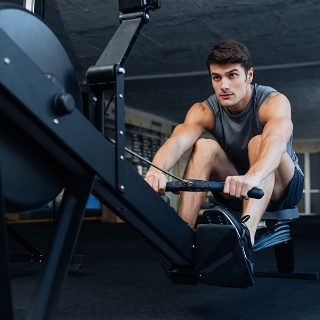 Goal = Body fat loss, keep your size
Goal = Body fat loss, keep your size
In order to shed the excess body fat but maintain your size, you’ll want to weight train 4-5 days a week, do 2-3 days of cardio, and increase your calorie intake of healthy foods.
Recommended cardio: Running, endurance cycling, or boxing.
Suggested weight-lifting exercises: Squat rack, deadlifts, power clean, snatch, chest press, lat pull down machine, and overhead press.
Goal = Weight loss, decrease overall size
This goal essentially means that your main goal is to lose weight–whether it’s body fat, or otherwise. Here, you become fast friends with circuit training 3-4 days a week, cardio 2-3 days a week, and maintaining a healthy diet and modestly restricting calories.
Recommended cardio: Calorie expenditure is king when it comes to this goal. So, mix it up with whole body cardio, high-intensity interval training (HIIT), endurance training. Examples are running hills or track running, stairs, basketball, dancing, or cycling.
Suggested strength exercises: Seated row machine, chest press with free weights, standing squats, walking lunges, plank, and walkouts to a push up.
Goal = Weight loss, decrease size, and get stronger
If your main goal is to get healthy and lose some of the extra fluff, you’ll want to amp up the cardio and do strength moves that use your whole body. This type of training will make you one lean machine!
Recommended cardio: HIIT through workouts like Tabata, spin class, or Fartlek running, hiking, or running stairs with a weighted vest.
Suggested compound strength moves: Burpees with push-ups, clean and press, snatch, rows in plank, or dive-bomber push ups.
4. Snacks to boost weight loss
Eating a diet high in protein, the right kind of carbohydrates, and staying hydrated is important to weight loss. Take some hot tips from Men’s Fitness on how to maximize your calorie usage!
• Peanut butter with a green apple
• Chicken breast with quinoa
• Hard-boiled eggs
No matter what your goal, keeping a balanced weekly workout plan where you are training smart and eating a clean diet is important to staying healthy. Consult your personal trainer, a sports nutritionist, or your physician for more info on how you can better your health and lose body fat!


